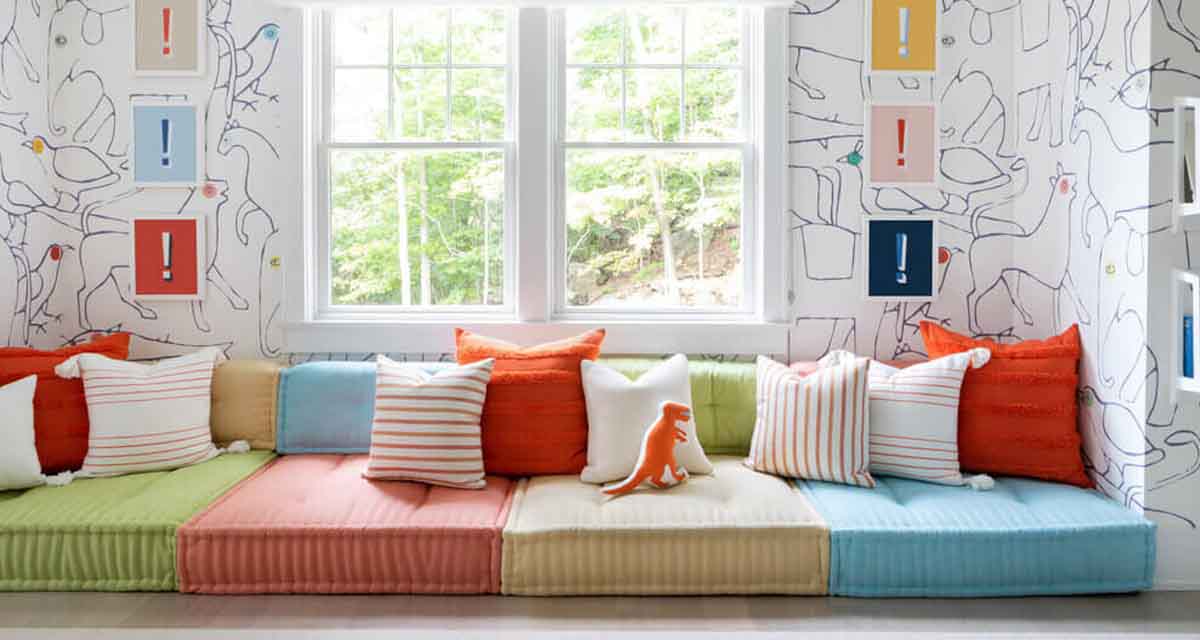Most of us recall our childhood bedrooms in vivid detail. It was pretty much our whole world. For me it was the comfort of my bed, the place where I lined up my excessive stuffed toy collection, the corner where I read my books, the floor where I built play mobile, lego and forest family villages. It’s where my friends came to play and where I could play my tape cassette uninterrupted (am I giving my age away?!).
Not just another room in the house, a child’s bedroom can be central to their personal development.
If you are now on the other side, having to design and decorate your child’s bedroom, you may find yourself a little overwhelmed. Just a quick scroll on Pinterest can leave you with design anxiety. There are SO MANY amazing kids rooms out there and if you’re anything like me, you want to bring a little piece of them all into your own child’s bedroom – including the built-in bunk beds and indoor playpark!
A child’s bedroom is also the one room in the house your child will feel “in charge”. The room where they set the rules, can express their personal choices and in theory can play freely without having to hear the words “don’t touch that” or “put that down” expressed on a regular basis. As such it is worth spending time to think about how to make the space flexible, simple and “child proof”, so that they can play freely and unobserved for periods of time.
To help get you started we’re sharing what we’ve learnt from designing kids rooms, and also how to think about designing a room so that ultimately it grows with your kids.
Start With The Key Pieces
The key pieces include beds, bedside pedestals and required storage. For these items we often advise not to go too fully kid centric and rather invest in pieces that have a good amount of longevity in them and that will grow with your child. You can bring the childhood fun in through other ways.
This also refers to any built in units that you are considering. On our House G project where we designed the built-in closets for little sisters (ages 2 and 5), we knew that although standard height clothing rails were going to be out of their reach currently, we couldn’t put the rails low enough for the kids to reach. We needed to consider the long-term reality of kids growing up and the prospect that other adults would be using the room, or who the next home wonders would be.
To make the clothing currently accessible we used a combination of lower drawers that they can easily open and access during this phase of their lives, and dow the line would make good shoe storage
Make The Toys Accessible
Kids like to be able to touch and see their belongings, so their favourite toys need to be easily accessible. This does not mean they all need to spread across the floor, but its up to you to decide whether you want to place toys in storage baskets and bins, in closed drawers, or whether you want the items lined up along open shelving.
Montessori classrooms advocate for having a few select toys displayed so that your child can see and easily access each item. If you have more toys than you are able to display, then rather putting them all out at once, you can consider rotating the toys on a weekly or monthly basis, depending on what is gaining their interest at a given time. This is especially relevant as it is very common for kids to get choice paralysis. With too many toys over stimulating them, they can bounce from toy to toy without spending any quality time with one item.
Match Play Surfaces To Their Height
Offering children surfaces that are the right level for them to play at is key to making the room work for your child. Do they like to sit or stand at table? Many kids like to stand around a table and play with their toys, and then rather sit on the floor than on a chair. It’s why items such as play kitchens or steering wheels in playgrounds are so popular – its the correct eye level for toddlers.
Add Texture
We know all too well how parents often recoil at the prospect of anything soft and fluffy in their Childs’ room for fear of food or spills and just general dirt. But kids are tactile – which is why they all start out loving their soft toy or blanket – and they need something just as soft and fluffy in their bedroom to bring a tactile element to the space.
However we always advocate for soft, plush rugs or carpets on the floor in kids rooms (honestly, we prefer rugs which can be washed and swapped out over the years over wall-to wall carpeting). We see children gravitate to playing on sot
Bring In The Fun Factor
We like to bring the fun factor in through accessories like prints on the walls, wallpaper, lighting, bed linen and scatters, and loose storage.
Many of these items can easily be swapped out over the years and will immediately changed the overall feeling in the room. They certainly don’t need to be budget heavy investments either.
As your child grows, these elements also provide an opportunity for them to express their choices and desires for their bedroom. You don’t have to do literal applications of their choices, but certainly you can understand their interests and consider ways to bring them into their spaces.
If you need a little extra help pulling your dream kids room together, The Home Studio can help with all your design dilemmas. We are committed to bringing your design vision to life, and offer a range of services to make this process as smooth as possible.
Get in touch on hello@thehomestudio.co.za




 Images
Images 
 Images
Images 

